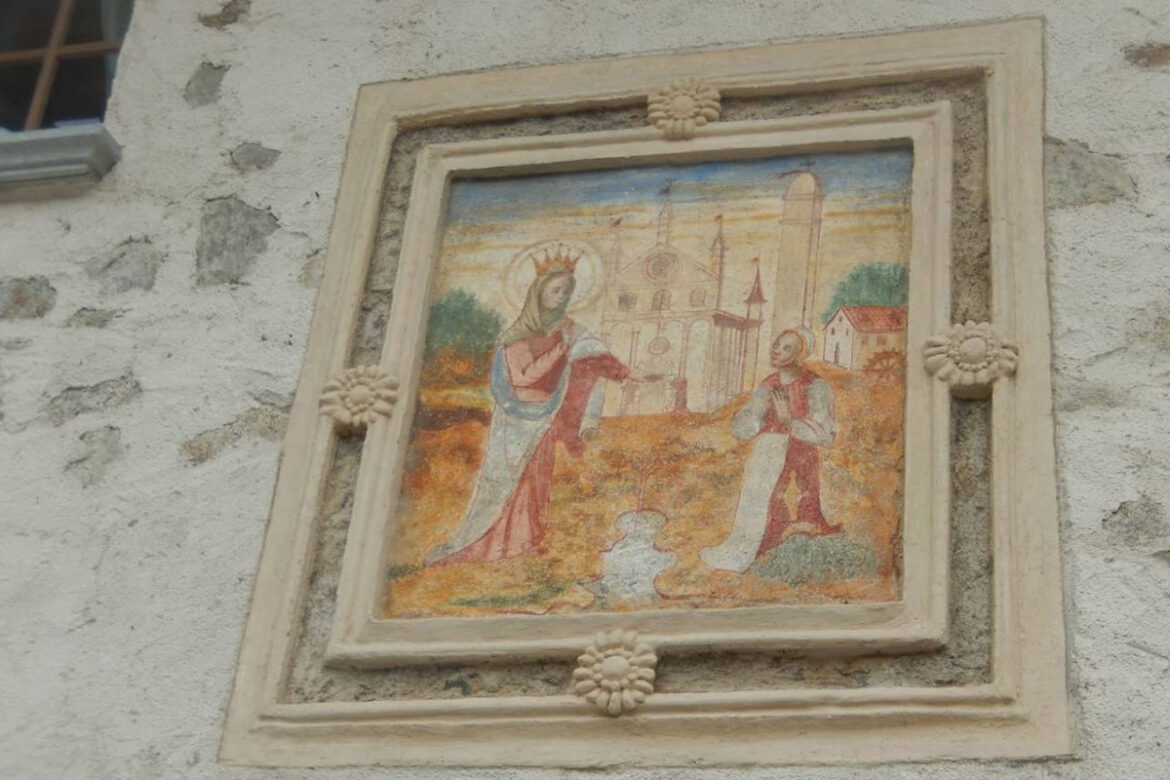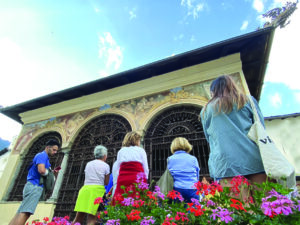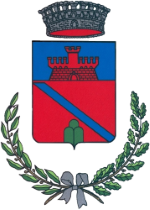
The fresco commemorates the miracle of the Apparition of the Madonna to the peasant Giannetta de’ Vacchi on May 26, 1432, near Caravaggio, where in 1451 the Sanctuary, a destination for pilgrimages and popular devotion, was built. This was the era when Lombardy was plagued by wars between the Duchy of Milan and the Most Serene Republic of Venice for dominance in the North, in which Valtellina also played a significant role due to the importance of its mountain passes. The story of the Apparition immediately captivated Christian piety, spreading throughout Italy and generating a true cult that, in addition to pilgrimage, drove devotees to erect temples dedicated to the Madonna of Caravaggio.
The iconography is the classic one of the Madonna blessing, dressed in a red robe and a large blue cloak, with a white veil. On her head is a golden crown, and around her face is a halo of light. The young peasant, in an attitude of prayer, gazes at her rapturously with a sheaf of wheat and a sickle beside her; between them, a small pool of water recalls the miraculous spring that gushed forth where the Madonna placed her foot, leaving a mark. From this pool, life springs forth, symbolized by the image of a withered branch blooming again (unfortunately heavily damaged), with the stem visible, which likely had a white flower at its top. In the background, beyond the Sanctuary, stands a mill, symbolizing agricultural labor.
The Sanctuary depicted in the fresco appears to represent the new temple promoted by the Archbishop of Milan, Carlo Borromeo, starting in 1575; the dome (built between 1691 and 1695) is not shown, and elements that were later demolished or modified (the pediment topped by three turrets, the two bell towers) are present. The hypothesis of a 17th-century dating, a time when the cult of St. Charles Borromeo spread widely, is uncertain and not demonstrable: indeed, it was quite common practice for many painters of the 19th and 20th centuries to use sacred prototypes reproduced in old prints as models.






